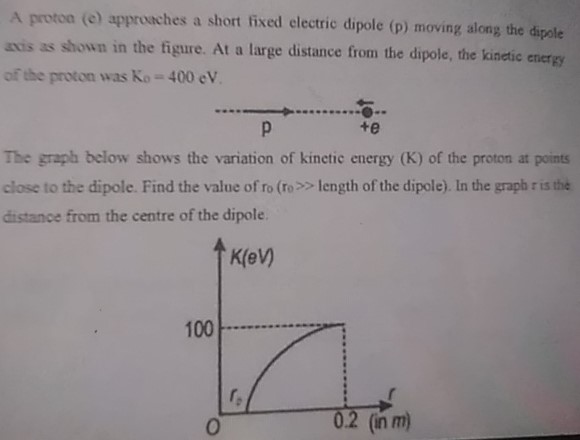A proton (e) appronches a short fixed electric dipole (p) moving along the dipole axis as shown in the figure. At a large distance from the dipole, the kinetic energy of the proton was K0 = 400 eV. The graph below shows the variation of kinetic energy (K) of the proton at points close to the dipole. Find the value of ro0 ( ro0≫ length of the dipole). In the graph r is the distance from the centre of the dipole.
